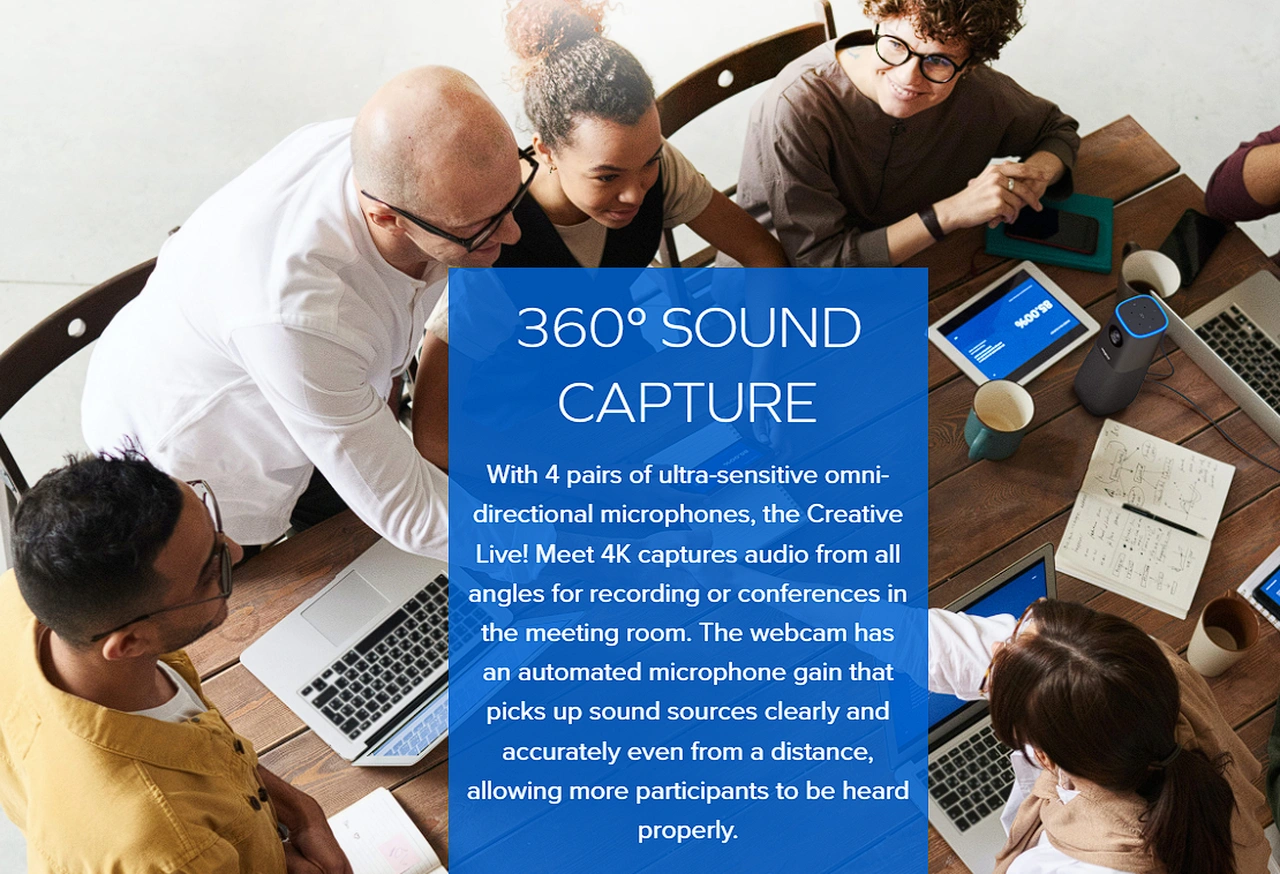
The Creative Live! Meet 4K web camera is designed to enhance the quality of virtual interactions, whether they be formal meetings, educational classes, or recreational activities. The Meet 4K web camera is equipped with a host of advanced features that collectively deliver a superior video conferencing experience.
One of the standout features is its 4K UHD resolution, powered by a cutting-edge Sony STARVIS IMX415 CMOS imaging sensor. This combination ensures vivid, detailed visuals that bring a new level of clarity to virtual interactions. The high-definition resolution, coupled with the advanced imaging sensor, provides a level of detail and color accuracy that is truly remarkable.
Equally impressive is the webcam’s wide-angle field of view. With up to 115° of coverage, the Creative Live! Meet 4K web camera is ideal for large meetings or presentations, ensuring all participants are clearly visible. This broad field of view is complemented by an adjustable digital zoom feature, which allows users to focus on important details without compromising image quality. With 7X digital zoom, users can highlight key points or individuals, adding another layer of versatility to the device.
4K web camera
The Creative Live! Meet 4K web camera doesn’t compromise on audio quality either. It features four pairs of ultra-sensitive omni-directional microphones that provide comprehensive audio capture. This is further enhanced by an automated microphone gain that picks up sound from a distance, ensuring clear audio from all participants, regardless of their location. The inclusion of 40 mm Neodymium magnet speaker drivers further bolsters audio clarity and depth, providing a rich, immersive audio experience.

Other articles we have written that you may find of interest on the subject of web cameras :
In addition to its impressive visual and audio capabilities, the Creative Live! Meet 4K web camera boasts built-in AI tracking and framing technology. This feature uses facial recognition to keep the subject centered in the frame, eliminating the need for manual adjustments and ensuring the speaker is always the focus of attention. The webcam also responds to hand gestures, allowing users to trigger specific actions with a simple wave of the hand.
The user-friendly design of the Creative Live! Meet 4K web camera extends to its setup and operation. The device requires no additional driver installation and is compatible with both Windows and macOS platforms. It also includes a remote control and mic mute button for easy adjustments during conversations.
Moreover, users can access smart communication features such as VoiceDetect and NoiseClean-Out through the Creative App’s SmartComms Kit. These features further enhance the device’s functionality, making the Creative Live! Meet 4K web camera a comprehensive solution for all virtual conferencing needs.
The Creative Live! Meet 4K web camera is a versatile, high-quality device that offers a range of advanced features designed to enhance the virtual conferencing experience. With its superior visual and audio capabilities, user-friendly design, and smart communication features, it provides an unparalleled level of clarity and engagement in the virtual communication space.
Source : Creative
Filed Under: Camera News, Top News
Latest timeswonderful Deals
Disclosure: Some of our articles include affiliate links. If you buy something through one of these links, timeswonderful may earn an affiliate commission. Learn about our Disclosure Policy.


